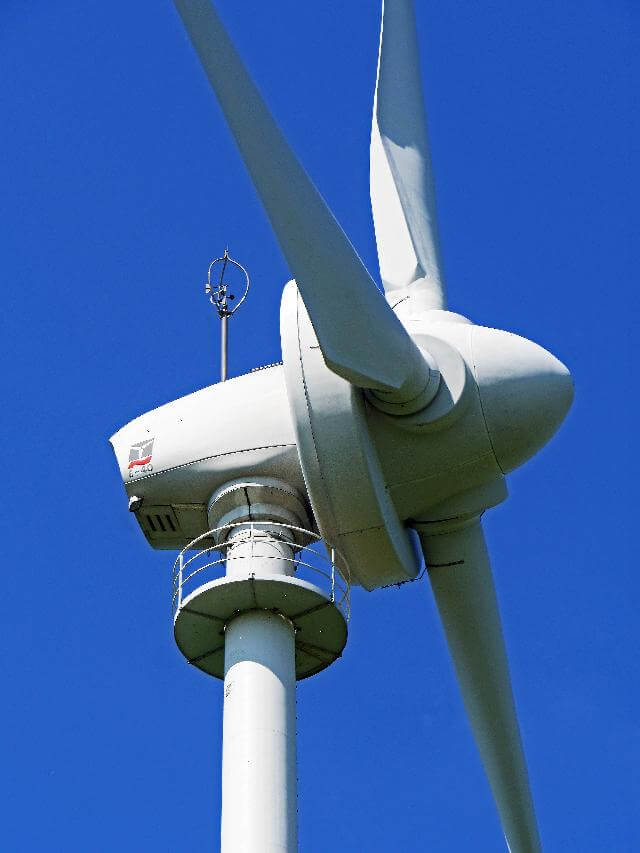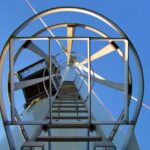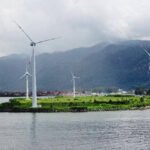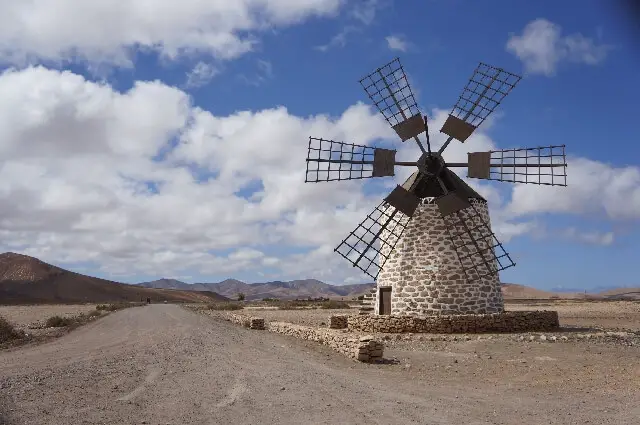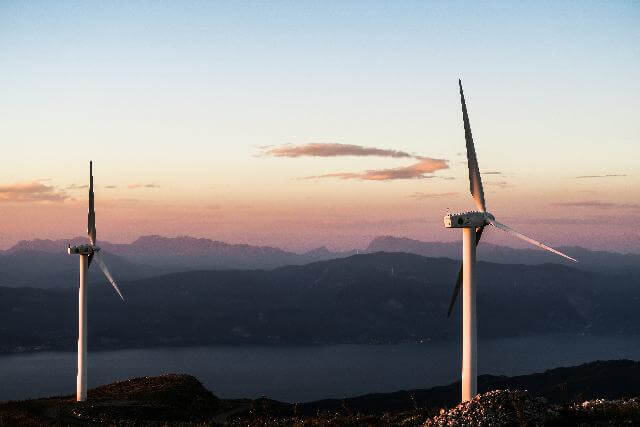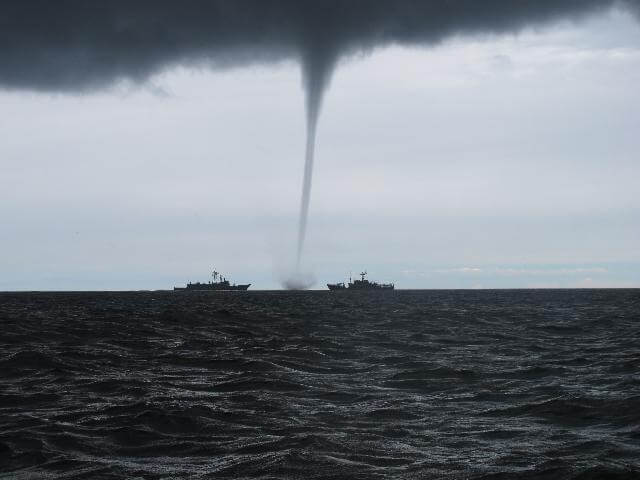How do wind turbines know where to turn to catch the wind? This is something that everyone has wondered about…
We know that this is something called “Yaw control.” But how does it work? Well, here we have found the answer to this question.
Keep reading to know all about yaw control in wind turbines.
What is Yaw control?
Yaw control allows the whole wind turbine to rotate in the horizontal axis.
This makes sure that the wind turbine is always facing the wind.
This will make sure that wind turbines are more efficient in generating electricity.
The first recorded use of yaw control was in windmills.
During the mid-18th century, the windmills were able to turn to face the wind.
The main structure of the windmill has the nacelle mounted on it.
This was with old-fashioned wooden gliding bearings, and animal fat greased them.
The windmills needed human power or animal power for rotation. Wind power the windmills with a fantail (auxiliary rotor).
How do wind turbines work?
Wind farms use plenty of wind turbines to turn wind movement into electricity.
Wind turbines have common components.
There are six important parts to a wind turbine.
There are plenty of supporting gears and mechanisms. These six parts include the following:
- The Foundation or base
- The Generator
- The Rotor
- The Hub
- The Nacelle
- The Tower
The Foundation or Base
For onshore turbines, the foundation is underground and covered by the soil.
It’s an enormous, heavy concrete block that holds the wind turbine steady against the force of the wind.
The foundation of offshore wind turbines are underwater.
When the wind turbines are far out in the ocean, the base will float in some situations.
The base will also be able to support the turbine weight.
The Generator
The wind turbines use their generators to turn the rotor movement into electricity. The generators have a similar design to electronic motors.
The Rotor
The rotors in the wind turbines are the part that rotates and usually have three blades.
The central hub of the wind turbine connects all three blades.
In some cases, wind turbines will have two or four blades.
A lightweight and strong material makes the blades of wind turbines.
This material makes the blades bigger and more powerful.
The Hub
The hub of the wind turbine is in the middle of the blades.
It holds three or more blades at the top of the wind turbine.
It makes sure that the blades can rotate with the rest of the wind turbine.
The Nacelle
The nacelle protects the components and mechanisms of the wind turbine.
It’s located at the top of the wind turbine.
The most important components among these include the generator and turbine shaft.
The nacelle also protects the gearbox.
The Tower
Wind turbines will have a round steel tube with a diameter of 10 – 13 feet (ca. 4 m).
They have a height of up to 370 feet (ca. 113 m).
This will also depend on the location and the size of the turbines.
The height of the wind turbine needs to be the same as the circle diameter that the blades make when moving.
What wind turbines need to have Yaw control
Horizontal-axis wind turbines need yaw control.
These wind turbines can use either active or passive yaw control in their system.
But vertical-axis wind turbines don’t need yaw control.
This is because their vertical rotors can pick up the wind in any direction.
Types of Yaw control
There are different types of yaw control for wind turbines.
These are active and passive yaw control. Each of them has its own pros and cons.
Passive control
With the passive yaw control system, the force of the wind moves the wind turbine’s rotor.
The most basic passive control system will include a roller bearing connection.
The roller bearing will be between the nacelle and the tower of the wind turbine.
There is also a tail fin that’s mounted on the component’s cover (nacelle).
Small wind turbines will use a tail fin.
This is because they are more affordable and better suited to smaller wind turbines.
The wind turbine won’t need the tail fin when there is a case of downwind.
This is because the rotor can move the nacelle to face the wind.
When there are skew winds, the wind pressure in the swept area can cause the yaw control to move around the tower.
The passive control ensures that the yaw movement isn’t too fast when there is a sudden change in the wind.
Most passive yaw controls will include the following components:
- Gliding Bearing/Brake. The gliding bearing has the nacelle attached to it. It can rotate in any direction.
- Roller Bearing (free system). This will have the nacelle attached to it. With this component, the yawing movement will come from an attached tail fin or rotor.
- Roller Bearing — Brake (semi-active system). This component can move in any direction to catch the wind. When the wind turbine faces the wind, the yawing motion will stop the nacelle.
Active Yaw control
This system has a device that rotates the wind turbine while the tower stands still.
The yaw control will pick up on the direction of the wind and move to face it.
Active yaw control is a developed system with wind farms.
It is usually used in large wind turbines.
Wind turbines with active yaw control can have different gears and workings.
This will all depend on the design of the wind turbine.
But all active yaw systems will have the following:
- Yaw Bearing: A connection that can rotate and connect the nacelle and the tower.
- Yaw Drive: This will make sure that the wind turbine keeps facing the wind. It will do this even when there is a change in wind direction.
- Yaw Brake: This component will help limit the movement of the nacelle.
- Wind vane: This is a system that reads the signals from the sensors on the wind turbine. It commands the components to move the rotor blades to face the wind.
Final word on Yaw control
Wind farms have been around for decades.
Before we had wind turbines, we used windmills to generate wind energy.
Both have specialized components that assist in the yaw control with wind turbines.
These wind turbines rely on the motion of the wind to move the blades.
Other wind turbines have an active yaw control system that rely on mechanisms to catch the wind.
Yaw control is essential to wind turbines and to generate wind electricity.
Without yaw control, they can’t catch the wind to generate electricity. This electricity will power homes and businesses.
Reference:
What is Yaw Control in wind turbines? (References)
http://www.differencebetween.net/language/words-language/difference-between-yaw-and-pitch/
